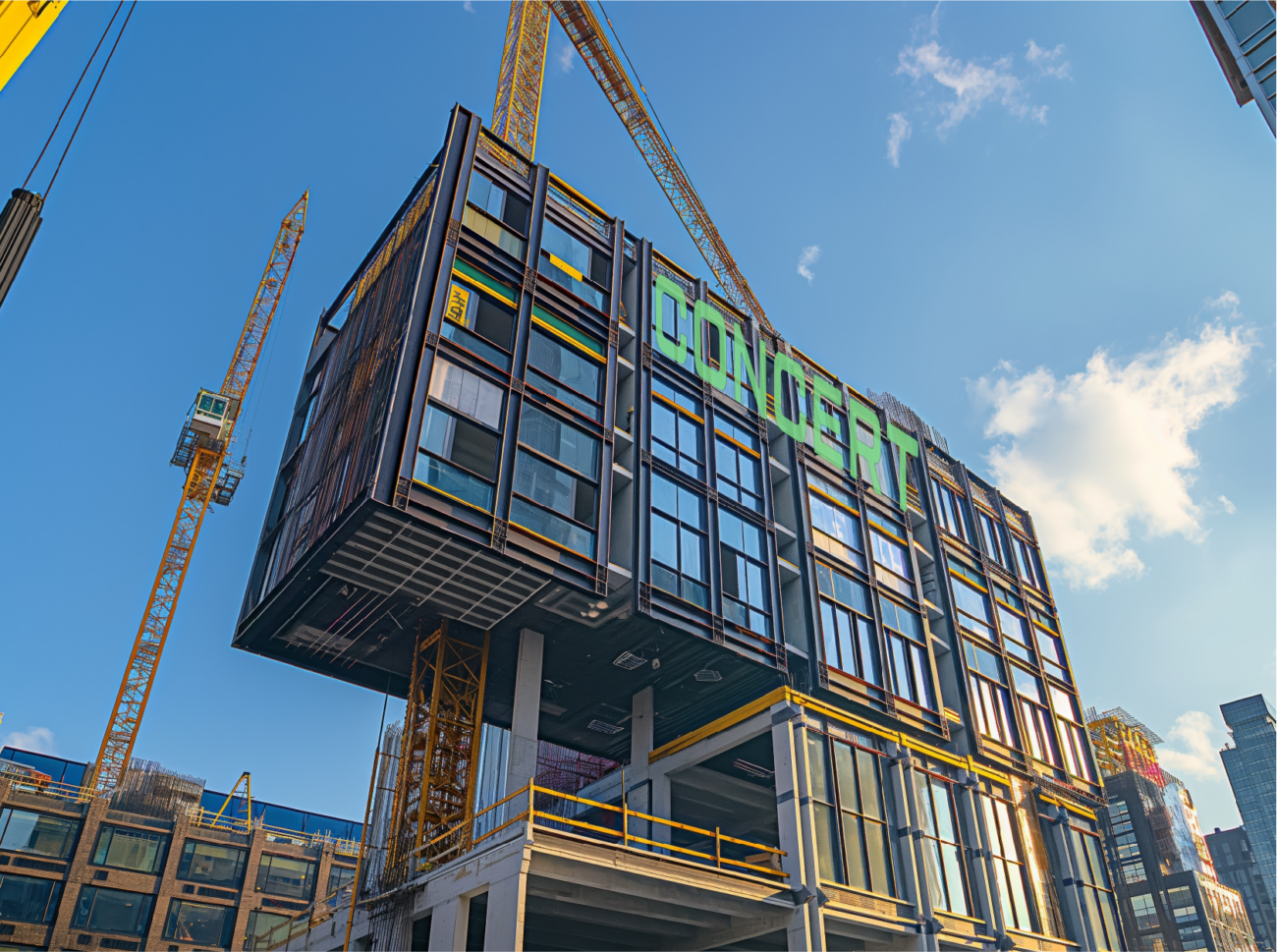Tim Dufault, FAIA – Concert CRO
The most recent Intergovernmental Panel on Climate Change (IPCC) provided a small measure of hope that catastrophic climate change can be avoided, but only with a concerted effort from several key industries including buildings, transportation, and urban design. These have historically been some of the least technologically advanced but that has been changing rapidly with digitization and automation
So, What Does Digital Design Data have to do with Saving the World?
In a word – Everything! The building industry emits or creates forty percent of the carbon dioxide in our atmosphere.
FORTY PERCENT!
To make progress on reducing Greenhouse Gas (GHG) emissions, we must focus on four key practices:
- Efficiency – We must create more efficiency in the processes for design, construction, and operations in the built environment
- Modeling – Testing ideas virtually first reduces the application of less-than-ideal solutions and the carbon impacts of those decisions.
- Measurement – You cannot change what you don’t measure
- Recording – There must be a method to track and record the data on performance and impacts so we can better understand the outcomes.
To achieve the carbon reduction goals and keep global warming to less than 1.5°celsius, we must make radical changes to the design, construction, and operational processes in buildings, full stop. CO2 emissions come from emitted and embodied sources, thusly, significant improvements must come from energy efficiency (Scope 1/2), system and material changes (Scope 2/3), and a long-term focus on behavioral changes (Scope 3). Just re-tooling existing building systems and processes will not achieve the necessary reductions. Digital Design Data (3D) processes offer the foundation for a data-centric system whereby we create the ability to model decision-making and application, measure the projected outcomes, and create a record of the data to promote more efficient systems and performance over the life of the building.
3D is the code for building.
It starts with how we use 3D to improve building efficiency and how we model those changes. Capturing the impact of every material, system, and operation in a building is a complex problem, but it is possible. It requires early modeling to assess the impact of decisions on the building’s design, construction, and operational processes. Artificial Intelligence and generative design programs reconcile the hundreds of permutations that define outcomes; from changes in materials, changes in systems, changes in system performance, operational sequencing, and, most importantly, the impact of human interactions. Capturing and creating an enduring record of the model’s evolution will help inform how those human interactions must change. But for it truly to improve efficiency, it must extend well beyond early modeling, it must continue throughout design AND construction because changes in any material or system will fundamentally change the outcomes. This early model, the Architect’s model, must become the only authorized source of truth.
Beyond the process of modeling outcomes, 3D defines the Design Intent, and it should be used for construction. We believe, soon this will become the norm in the industry – because it makes sense. The reduction in information fidelity and the opportunity for errors/misinterpretation that results from the translation of 3D to 2d plans and specifications are significant. Sharing the 3D information and using it as the basis for construction is the most efficient method for achieving the Design Intent. The information embodied captures the scale, scope, and quality of materials and systems. The efficiencies gained during construction will shorten the overall timeframe and will improve the cost performance – across the board. 3D is the Code for Building!
Construction is not static, it is a dynamic system where information changes, systems are changed, or substitutions replace original solutions – the inputs change every day. There are new tools in the market that are designed to capture information – Doxel and OpenSpace are two that come to mind – but there must be a tool that captures the record of how that information changed the Design Intent.
Concert, with its Blockchain-based record and data interrogation, is that mechanism. Concert is built to create a robust record of each iteration, activity, and author of each thread in the data stream, and serves as the foundation of the full digital sharing system – it is the underlying “OS” for all 3D systems.
Because of the Blockchain record, Concert gives all participants in the process confidence in the data, confidence in the authority of that data, and confidence in the chain of custody at each step along the way. Confidence in the data will positively shape decisions as it begins to inform with greater detail the impact of those decisions. Confidence in the data will promote efficiency as the ability to use that data directly becomes more integrated into the overall process. With efficiency comes improved performance and outcomes that will move us closer to achieving greater reductions in GHGs in the building industry.
We can get there and achieve our goals but doing so will require work and changes from all of us. Next week, we will discuss how Concert aids in the measurement of performance, emissions, and outcomes to inform and record the impact of a building or set of buildings.





